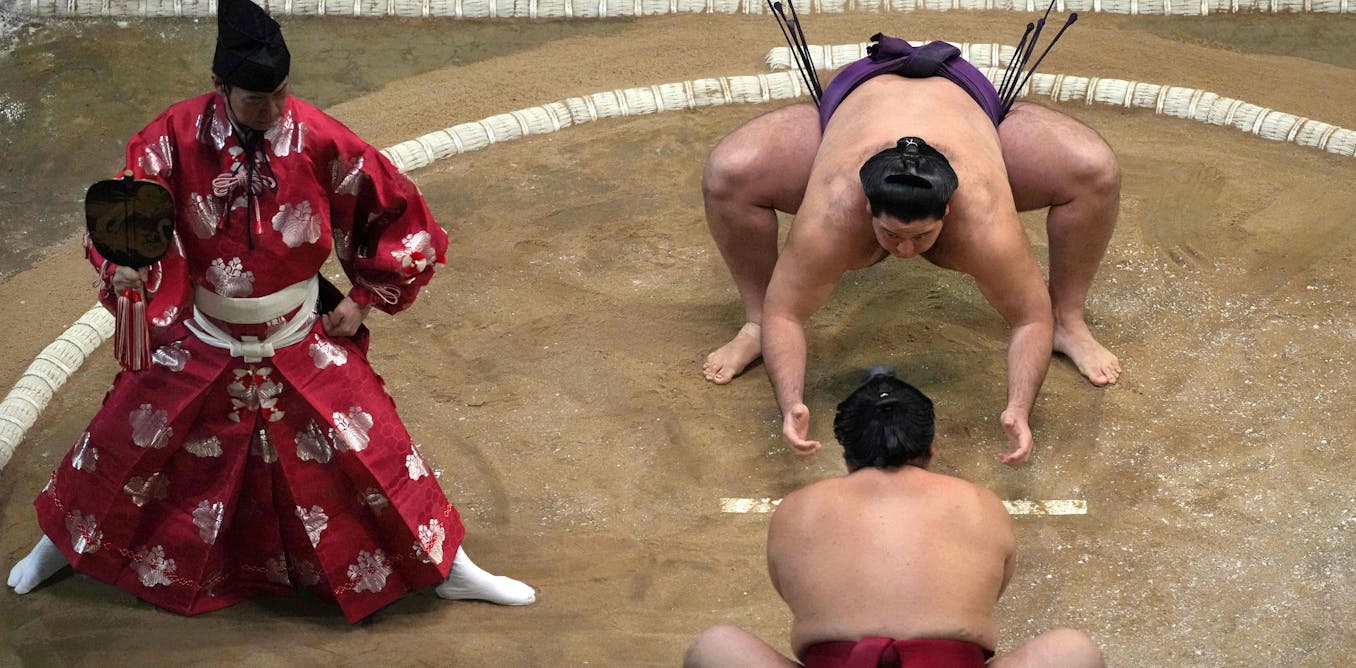
"A visitor to Japan who wanders into a sumo tournament might be forgiven for thinking they had intruded upon a religious ceremony. Tournaments begin with a line of burly men wearing little more than elaborately decorated aprons walking in a line onto a raised earthen stage. Their names are called as they circle around a ring made of partially buried bales of rice straw. Turning toward the center, they clap, lift their aprons, raise their arms upward, and then exit without a word."
"Then two of those men face each other, crouching, clapping their hands together and stomping on the ground. They pause repeatedly to rinse their mouths with water and toss salt into the ring. Overseeing their movements is a man outfitted in a colorful kimono and a black hat resembling that of a Shinto priest and holding a tasseled fan. After a subtle gesture with his fan, they finally grapple - and only then would the uninformed observer realize that the performance was an athletic event."
"Every sport has its rituals, from the All Blacks rugby team's pregame haka to the polite handshake between victor and vanquished over the tennis court net. Some, like many sumo rituals, have roots in religious practices. A few hundred years ago, competitions were frequently held at temples and shrines as part of festivals. Today, sumo is a modern sport with records, rules and a governing institution that celebrated its 100th anniversary in October 2025."
Sumo tournaments retain many ceremonial elements that resemble Shinto rituals. Wrestlers enter wearing elaborate aprons, circle a straw ring, clap, lift their aprons, raise their arms, and perform salt throwing and mouth rinsing for purification. A referee in a colorful kimono and black hat performs gestural control with a tasseled fan. Matches conclude only after formalized ritualized gestures, revealing the athletic contest beneath the ceremony. Sumo developed from contests held at temples and shrines and has evolved into a regulated modern sport with records and a governing body. Sumo rituals continue to shape foreign perceptions of Japan.
Read at The Conversation
Unable to calculate read time
Collection
[
|
...
]